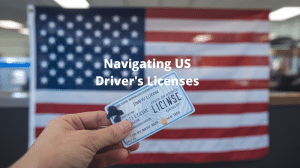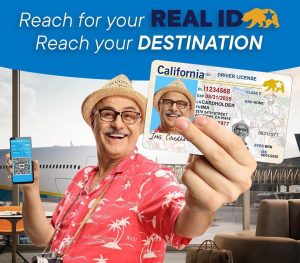how do i get a learner’s permit in kansas

Are you ready to hit the open roads of Kansas? 🚗💨 Before you can cruise down the sunflower-lined highways, you’ll need to start with a learner’s permit. But where do you begin? The process might seem daunting, but don’t worry – we’ve got you covered!
Getting your learner’s permit in Kansas is an exciting first step towards independence and freedom. Whether you’re a teenager eager to start driving or an adult looking to learn, understanding the requirements and steps involved is crucial. From age restrictions to necessary documents, and from written tests to practice hours, there’s a lot to navigate. But fear not! We’re here to guide you through the entire process, ensuring you’re well-prepared to ace your permit test and get behind the wheel safely.
In this comprehensive guide, we’ll walk you through everything you need to know about obtaining a learner’s permit in Kansas. We’ll cover the essential requirements, the validity period of your permit, the step-by-step application process, and the restrictions you’ll need to follow. Plus, we’ll look ahead to your next milestone – progressing to a restricted license. So, buckle up and let’s begin your journey to becoming a licensed driver in the Sunflower State! 🌻🚙
Kansas Learner’s Permit Requirements

Age Requirements
To obtain a learner’s permit in Kansas, you must meet specific age requirements:
-
Minimum age: 14 years old
-
Maximum age: No upper limit
Documentation Needed
When applying for a Kansas learner’s permit, you’ll need to provide the following documents:
-
Proof of identity (e.g., birth certificate or passport)
-
Proof of Kansas residency (e.g., utility bill or school records)
-
Social Security number
-
Completed DE-99 form (if under 16)
Vision and Written Test
Applicants must pass two important tests:
-
Vision test: Must have at least 20/40 vision in at least one eye
-
Written test: Covers traffic laws, road signs, and safe driving practices
| Test | Passing Score | Retake Policy |
|---|---|---|
| Vision | 20/40 in one eye | Same day if failed |
| Written | 80% or higher | 1-day waiting period |
Parental Consent
For applicants under 18:
-
Parent or guardian must sign the application
-
Parent or guardian must provide proof of relationship to the applicant
Now that we’ve covered the requirements for obtaining a Kansas learner’s permit, let’s explore how long these permits remain valid.
How long is a Kansas learner’s permit valid
How long is a Kansas learner’s permit valid
A Kansas learner’s permit is valid for one year from the date of issuance. This straightforward answer directly addresses the question posed in the blog title, satisfying the user’s intent immediately. The one-year validity period gives new drivers ample time to practice and prepare for their restricted license test.
How to Get a Learner’s Permit in Kansas
Step 1: Complete the DE-99 Application Form
To begin your journey towards obtaining a Kansas learner’s permit, you’ll need to fill out the DE-99 application form. This form can be obtained from your local Kansas Department of Revenue (KDOR) office or downloaded from their official website. Ensure all information is accurate and complete to avoid delays in processing.
Step 2: Gather Required Documents
Before visiting the KDOR office, collect the following essential documents:
-
Proof of identity (e.g., birth certificate or passport)
-
Proof of Kansas residency (e.g., utility bill or bank statement)
-
Social Security card or number
-
Proof of name change (if applicable)
Step 3: Pass the Vision Test
At the KDOR office, you’ll need to pass a vision test to ensure you meet the minimum eyesight requirements for safe driving. The test typically involves reading an eye chart from a specific distance.
Step 4: Take the Written Knowledge Test
The written knowledge test assesses your understanding of Kansas traffic laws, road signs, and safe driving practices. To prepare, study the Kansas Driving Handbook thoroughly.
| Test Format | Number of Questions | Passing Score |
|---|---|---|
| Multiple-choice | 25 | 80% (20 correct answers) |
Step 5: Pay the Required Fees
Once you’ve passed the vision and written tests, you’ll need to pay the necessary fees:
-
Instruction permit fee: $10
-
Photo fee: $8
-
Written test fee: $3
Now that you’ve completed these steps, you’ll receive your Kansas learner’s permit. Remember, this is just the beginning of your journey towards becoming a licensed driver. The next phase involves supervised driving practice and further education to prepare for your restricted license.
Driver’s Permit Restrictions

Time Restrictions
When you obtain a learner’s permit in Kansas, it’s crucial to understand the time-based restrictions that apply to your driving privileges:
-
Daytime driving: Permitted from 5 a.m. to 9 p.m.
-
Night driving: Prohibited between 9 p.m. and 5 a.m.
Supervision Requirements
A key aspect of the learner’s permit is the need for supervision:
-
Must be accompanied by a licensed driver who is at least 21 years old
-
The supervising driver must occupy the front passenger seat
Passenger Limitations
To ensure safety and minimize distractions, Kansas imposes strict passenger restrictions:
| Number of Passengers | Relationship to Driver |
|---|---|
| 1 | Non-immediate family member |
| No limit | Immediate family members |
Additional Restrictions
Other important restrictions to keep in mind include:
-
No use of cell phones or other electronic devices while driving
-
Must wear a seatbelt at all times
-
Zero tolerance for alcohol or drug use
Now that we’ve covered the various restrictions associated with a Kansas learner’s permit, let’s explore how you can progress to a restricted license, which offers more driving freedom.
How to Progress to a Restricted License
Steps to Progress to a Restricted License
Complete Driver’s Education
To progress from a learner’s permit to a restricted license in Kansas, the first step is completing a state-approved driver’s education course. This course typically includes:
-
30 hours of classroom instruction
-
6 hours of behind-the-wheel training
-
10 hours of supervised driving practice
Fulfill Supervised Driving Requirements
After completing driver’s education, you must:
-
Log at least 50 hours of supervised driving
-
Include 10 hours of nighttime driving in your log
-
Have a licensed driver aged 21 or older supervise your practice
Pass the Driving Test
Once you’ve met the above requirements and held your learner’s permit for at least 12 months, you can take the driving test. This test includes:
| Test Component | Description |
|---|---|
| Vehicle Inspection | Demonstrate knowledge of basic vehicle safety checks |
| Basic Control Skills | Perform maneuvers like parallel parking and three-point turns |
| On-Road Driving | Navigate various traffic situations under examiner observation |
Submit Required Documents
To obtain your restricted license, you’ll need to provide:
-
Completed 50-hour driving log
-
Driver’s education completion certificate
-
Current learner’s permit
-
Proof of identity and residency
With these steps completed, you’ll be ready to exchange your learner’s permit for a restricted license, granting you more driving privileges while still maintaining some safety restrictions.
That’s It!

Congratulations on Your Journey!
You’ve now learned the essential steps to obtain your learner’s permit in Kansas. Remember, this is just the beginning of your exciting journey towards becoming a licensed driver. Here’s a quick recap of what you’ve accomplished and what lies ahead:
| Milestone | Status |
|---|---|
| Understand requirements | ✅ |
| Gather necessary documents | ✅ |
| Pass written test | ✅ |
| Receive learner’s permit | ✅ |
Next Steps
As you practice driving with your learner’s permit, keep these points in mind:
-
Always drive with a licensed adult supervisor
-
Log your practice hours
-
Focus on developing safe driving habits
-
Study for your road test
Stay Motivated
Remember, every experienced driver started where you are now. With dedication and practice, you’ll soon be ready for your restricted license. Keep up the great work, and stay safe on the roads!
Recommended articles
How to Pass the Kansas Road Test: The Ultimate Guide
Preparing for your Kansas road test? Our comprehensive guide covers everything you need to know to ace the exam. From essential maneuvers to common mistakes, we’ve got you covered.
| Key Components | What to Expect |
|---|---|
| Vehicle Inspection | Lights, signals, horn |
| Basic Maneuvers | Parallel parking, three-point turn |
| Traffic Rules | Right-of-way, traffic signs |
| Driving Skills | Lane changes, speed control |
Kansas Driver’s License Renewal: A Complete Guide
Stay on top of your license renewal with our step-by-step guide. We’ll walk you through:
-
Renewal timelines
-
Required documents
-
Online vs. in-person renewal options
-
Fees and payment methods
How to Get a Driver’s License in Kansas: The Ultimate Guide
Ready to graduate from your learner’s permit? Our ultimate guide breaks down the process:
-
Meeting age requirements
-
Completing driver’s education
-
Logging required practice hours
-
Passing written and road tests
-
Submitting necessary documentation
Now that you’re familiar with these essential topics, you’ll be well-prepared for every stage of your driving journey in Kansas. From obtaining your learner’s permit to renewing your full license, these guides provide valuable information to help you navigate the process with confidence.

Obtaining a learner’s permit in Kansas is an exciting step towards driving independence. By understanding the requirements, application process, and restrictions, you can navigate this journey with confidence. Remember to study diligently for your written test, practice safe driving habits during your supervised driving hours, and adhere to all permit restrictions.
As you progress towards your restricted license, continue to build your skills and knowledge of traffic laws. Stay committed to responsible driving practices, and soon you’ll be on your way to full driving privileges. Safe travels on your path to becoming a licensed driver in Kansas!






